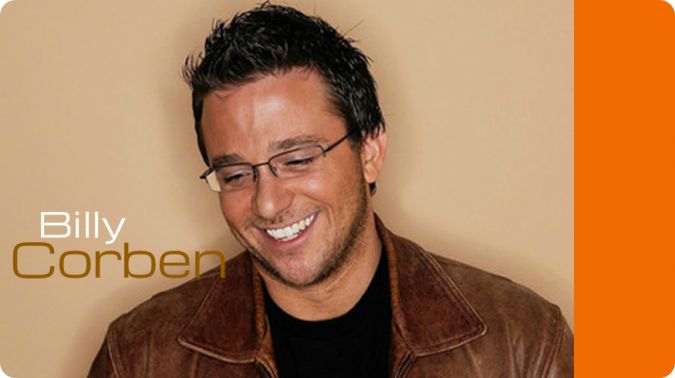
He directed documentaries like Raw Deal: A Question of Consent, Cocaine Cowboys 1 and 2. His latest documentary, Dawg Fight, is available through Netflix. My Filmviews spoke with Billy Corben about this raw movie, in which fighters go up against each other in the backyards, bare fisted. These fights are organised by Dada 5000, who’s a fighter himself.
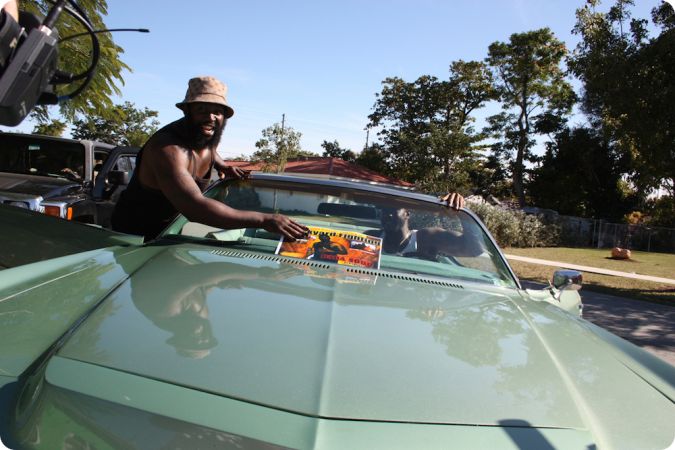
How did you find out about these backyard fights and what made you decide to make a documentary about them?
If you were in Miami in the mid-00s, you started hearing about Kimbo Slice. By the middle of the decade YouTube launched and backyard amateur fighting took off. Kimbo was the godfather of the game, and he inspired a new generation of young men in South Florida with little other opportunity to try and fight their way out to a better life for themselves and their families. They followed Kimbo’s “business model,” fighting in the backyard, video recording it and uploading it online in hopes of being discovered by a professional MMA trainer or promoter. Francisco Alvarado and photographer Colby Katz had covered the backyard fights for the Miami New Times. We were fascinated that Dada had made himself the Don King of the backyard brawls by organizing this illegal unsanctioned sport into block party events.
What really stood out to me is how the police is aware of these fights (and their risks), but decides not to intervene. Is the impact on the community really so big that it makes the neighbourhood “safer” as they know where everyone is?
It was community policing at its finest. The police would take stock of the neighborhood, go, “The streets are quiet, there’s no crime,” and what was happening? Dada was having an event. And that was a calculation on their part – “We know that, for a few hours on Saturday, the only violence occurring in the neighborhood is in a 12-by-12 ring between consenting adults.” They understood that it was illegal and unsanctioned, but they knew they had to police a community, not just enforce laws that legislators come up with in Tallahassee or Washington, D.C.
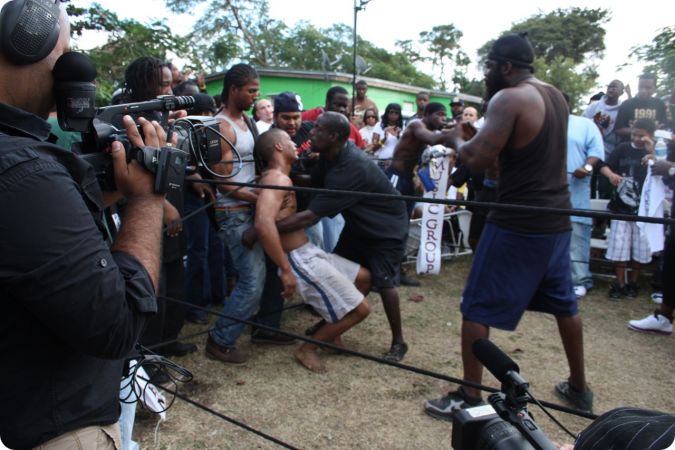
The movie not only shows the fights themselves, but also the dangers of the environment the fighters live in. Did you have to take extra precautions when filming and how did the events that happened to some of these men impact the production?
We were aware of and concerned about the violence. But what we didn’t expect was how warm, welcoming and festive the community and atmosphere were. These fighting events were like block parties, the whole neighborhood got involved, attending the events, providing parking, cooking and selling delicious food. I’ve often said that fight were the culinary highlight of my month. I had some of the best barbecue, seafood rice (West Perrine paella), fried catfish, etc. prepared by Dada’s neighbors.
This project, more so than any other we’ve ever done, was a real labor of love, a real passion project. And the deaths of two of the fighters in the movie helped spur our self-distribution plan. Particularly, the second fighter last year was the one where I felt like we have to get this movie out there. I don’t care about the money, the distribution – let’s just get it out there. We have to memorialize the lives of these men that could be just statistics of street violence or police Taser deaths. We have a story to tell. They were human beings who were here on the Earth for a time, and that’s where the passion comes from, even if people – even people in Miami-Dade – would rather not hear some of these stories.
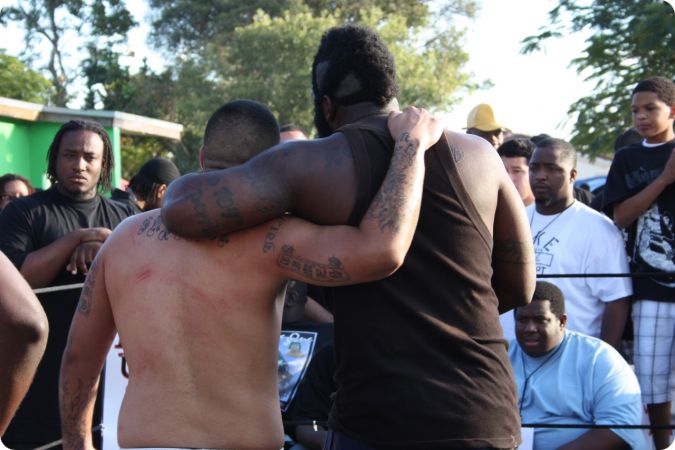
Before you have done other documentaries including the Cocaine Cowboys films, which used a lot of archival footage and looked back at that past with some of those involved. How did filming this compare as you have a lot less control about where the story will go?
There are two functions to a documentary: to record or to recreate. What we’ve always done in the past is recreate. We’ve done historic documentaries about events that have happened years or decades earlier and have tried to recapture and recreate those events and those times—Cocaine Cowboys, Limelight, Square Grouper, The U, The Tanning of America. Here we were recording. We were capturing the reality as it was unfolding and I feel as if it was a natural next step for us, to tell a contemporary and contemporaneous story in that style. It brought with it some unique challenges, because you don’t always have the story or know what direction the story is going in. You might have some idea of it, but it’s constantly evolving, obviously, as life does, and so your mind might change throughout the way.
Dada was always kind of our way in, our eyes in, our central focus. You know, this guy who had organized street fighting, who had become the Don King of the backyards in West Perrine—and of course his Kimbo-related back story was very compelling. He and his family were always going to be kind of central, but then we didn’t know which fighters were going to emerge as compelling figures worth following or tracking throughout. So we were just along for the ride and we shot… oh my god, I think thousands of hours of footage. I don’t know what the number was but it was an incredible amount of footage—more than we’ve ever shot I think on almost any project before. Then taking that and telling a story with a beginning, middle and end is a real challenge in production and post-production—knowing where to be and who to follow in production and then knowing how to do the same in kind of chiseling away at it to shape something. Fortunately a year into production, a real-life event occurred, an exciting opportunity for one of our main characters, that gave rise to the third act of out story.
And for a while, we didn’t know what we had. Was it a doc miniseries? Was it a reality or documentary ongoing series? Was it a feature documentary?—which is what it ended up as. There were a lot of different versions of this that we started cutting. And remember: this was like four backyard fighting events that we attended over the course of the years. There were like five or six fights each day, so you’re only seeing a fraction of the fights and the fighters that we got. There were really hard decisions about whose story to include and not include to get it down to a reasonable running time.
How do you pick the subject for the documentaries you do? Are these things that interest you and want to know more about?
The mission of a filmmaker is to find a good story and don’t fuck it up. That’s easier said than done. I use a formula that I call R.A.S. A good story must be Relevant and have a certain audience in mind who will care about it when you’re done investing the blood, sweat, and tears (and hopefully somebody else’s money). You need Access to all of the assets essential to tell that story (actors, financing, script, locations, interview subject, skilled collaborators, et al). Access is really the secret to life. As they say, “it’s not what you know, it’s who you know.” Lastly, you must adopt the best Style aesthetic to serve the story. It’s not what you say, it’s how you say it.
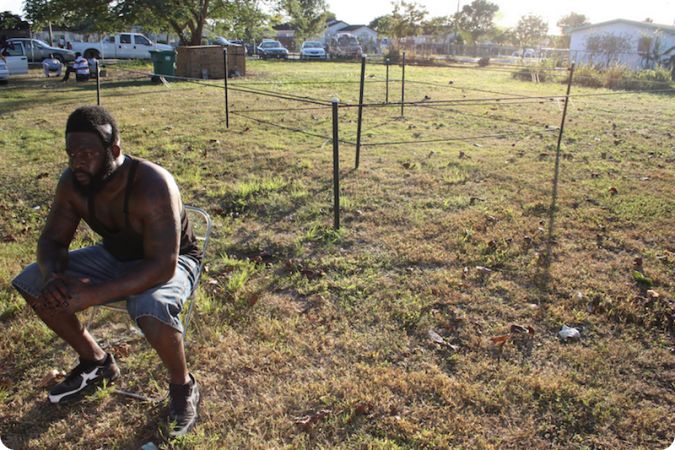
Dada 5000 was a central character in the film, who had to prove himself in the ring and was kind of forced in having to leave his backyard fight organising behind in order to be able to do the MMA fight. How difficult a decision was that for him to make as it seemed to be the thing he got a lot of joy out of?
As it turns out, Dawg Fight documents what amounted to the end of the regular organized backyard brawls. In fact, I believe our presence contributed to its demise. That wasn’t our intention, but as the profile of the events were raised, the state and local authorities had little choice but to crack down. Once he was shut down, Dada was at a crossroads: he could be forced back underground, or attempt to legitimize the operation. He chose a little bit of both, and has started a new fight league called BYBextreme.com, and just held his first pay-per-view event, featuring a card that included fighters from the backyard. They found a way to preserve the pirate nature of the backyard fighting, but legitimize it with fighters getting trained and professional medical staff on hand.
Are you currently working on any new documentaries?
Currently in development on a dramatic series based on Cocaine Cowboys, and several new docs and doc mini-series that I can’t discuss in detail yet, but we’re really looking forward to.
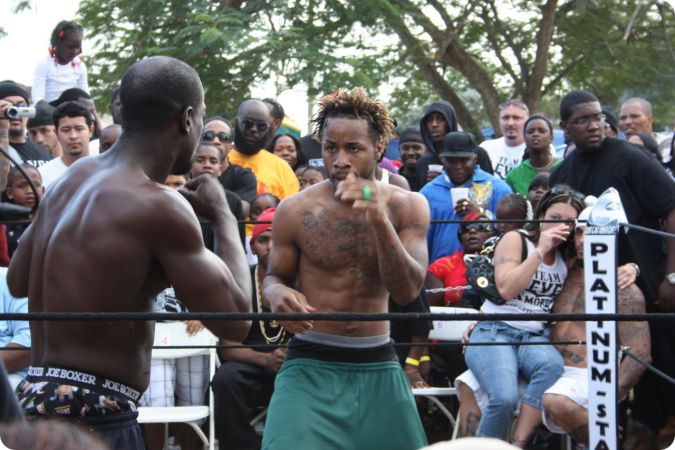
Why should people head over to Netflix and see Dawg Fight?
For people who are just interested in the fights, I think they’ll be satisfied. But for non-fight fans, I think there’s a lot more to it. We wanted to tell a story outside of the famous 15 blocks of Ocean Drive that everybody envisions when they think about Miami. People watch Dawg Fight and say, “This doesn’t even look like Miami. It looks like the third world.” And I say, It is the third world. It’s Miami-Dade County. We have the third highest income disparity in the nation, and the third highest rate of food stamp use. The separation between the have and the have-nots is increasing nationwide, but it’s happening first and faster down here.
There are people who really believe, perhaps tragically, that this is their best opportunity, to literally fight their way into a better life for themselves and their families. Here you have people who are working, even working multiple jobs, still living below the poverty line. Add to that the rate at which the United States locks up minorities, particularly minority males, for nonviolent drug offenses, and you don’t see a lot of hope for an abundance of legitimate opportunities. There’s an attitude that this is their best hope. I felt like this is a story worth telling.
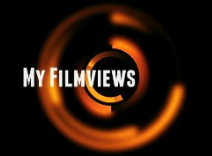
Excellent interview, and it definitely peaked my interest in that doc. I’ll have to go throw it in my queue.
Thank you Brittani. Be interested to hear what you think of it.